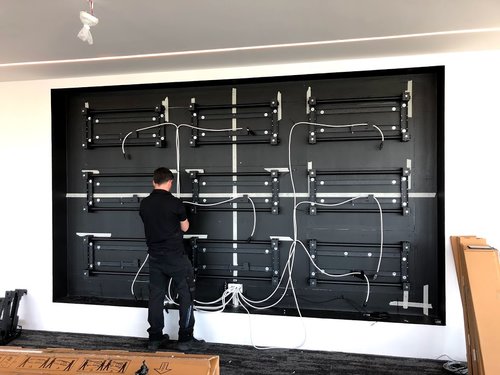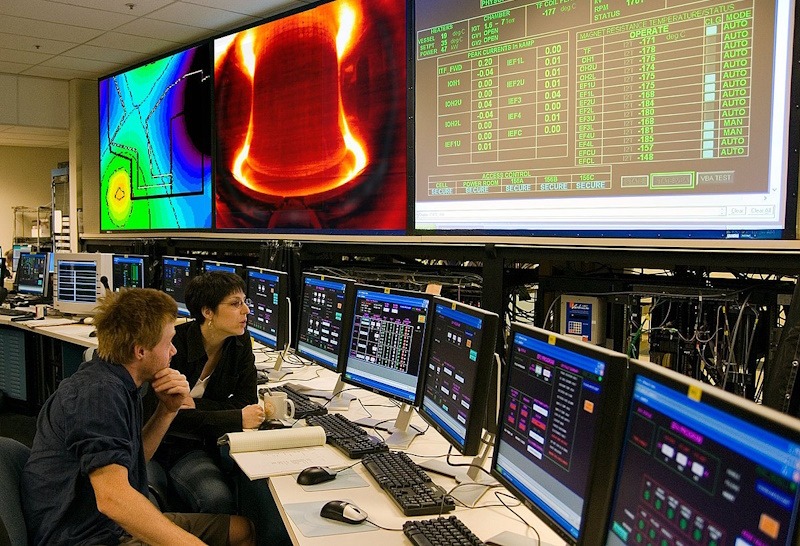The Ultimate Checklist for a Flawless AV Installation
The Ultimate Checklist for a Flawless AV Installation
Blog Article
Designing Dynamic Discovering Atmospheres With Advanced Sound Visual Solutions
In the swiftly evolving landscape of education, the assimilation of advanced audio-visual systems stands as an essential growth, transforming typical class into vibrant learning atmospheres. As we explore the capacity of these systems, one have to take into consideration how they reshape pedagogical methods and influence understanding end results.
Understanding Advanced AV Solutions
In today's quickly progressing instructional landscape, advanced audiovisual (AV) systems have ended up being indispensable to creating appealing and efficient discovering settings. These systems incorporate a wide range of innovations, consisting of interactive screens, high-definition projectors, and sophisticated noise systems, every one of which contribute to an extra immersive instructional experience. By leveraging these modern technologies, educators can present information in dynamic and varied styles, providing to numerous discovering demands and styles.
Comprehending the parts and capacities of sophisticated AV systems is critical for teachers and managers aiming to optimize their educational settings. Interactive screens, for example, make it possible for real-time cooperation and feedback, permitting pupils to involve more deeply with the content. High-definition projectors guarantee that visual products are provided with quality, improving understanding and retention. Progressed audio systems deliver clear audio, which is essential for keeping focus and guaranteeing that all students can comprehend the product and listen to being presented.
Incorporating sophisticated AV systems calls for not just an understanding of the innovation itself yet also strategic preparation to straighten these tools with instructional purposes. By thoughtfully integrating these systems, colleges can cultivate an environment that supports innovative teaching methods and improves the general instructional experience for both pupils and educators.
Enhancing Student Engagement
Everyone acknowledges that student engagement is an important part of effective understanding end results. Engaged students are most likely to absorb details, get involved proactively, and create critical believing skills. Advanced audio-visual (AV) systems play a substantial role in cultivating this involvement by developing interactive and immersive learning environments. These systems can change standard classrooms into vibrant settings where students are encouraged to discover.
High-quality audio and visual elements aid catch trainees' attention and boost their understanding of complicated subjects. Making use of big displays with crisp imagery and clear sound can make lessons a lot more comprehensible and fascinating. In addition, AV systems assist in varied teaching approaches, such as collaborative tasks and multimedia presentations, which can deal with numerous learning designs and keep trainees interested.
Moreover, the consolidation of AV systems permits for real-time comments and interaction between trainees and instructors. This immediacy can motivate energetic involvement, as pupils really feel much more attached to the lesson and positive in expressing their thoughts. Hence, by incorporating sophisticated AV technologies, universities can develop a revitalizing setting that not only improves engagement yet also supports much better academic performance and pupil contentment.
Integrating Interactive Technologies
Although the combination of interactive modern technologies in educational settings notes a significant shift from traditional teaching approaches, its influence on pupil learning and engagement is profound. Interactive technologies, such as smart boards, electronic tablets, and digital truth applications, have redefined the class, transforming it right into a dynamic area where students proactively join their learning journey. These innovations foster partnership, imagination, and essential reasoning, as trainees are motivated to communicate with digital web content, execute simulations, and participate in analytical activities.
Making use of interactive modern technologies promotes real-time comments and evaluation, allowing instructors to customize direction to meet specific requirements. This immediacy in feedback boosts the finding out process, enabling pupils to comprehend ideas more extensively and swiftly address false impressions. Such modern technologies promote inclusivity AV Installation by giving diverse learners with several ways of engaging and accessing with content.
In addition, these devices bridge the void between academic understanding and practical application, preparing trainees for a technology-driven world. By producing interactive and immersive learning experiences, instructors are better equipped to catch pupils' interest and receive their rate of interest. As the educational landscape proceeds to progress, the tactical assimilation of interactive technologies continues to be pivotal in promoting a reliable and engaging discovering setting.
Adapting to Diverse Learning Styles
Tailoring educational techniques to accommodate diverse understanding styles is essential in promoting a comprehensive and effective classroom setting. Advanced audio visual systems give flexible devices that can attend to the diverse choices of learners. For aesthetic students, devices such as high-resolution projectors and interactive whiteboards provide rich aesthetic content that improves understanding and retention. Auditory students take advantage of check this high-quality stereo that make certain clearness throughout lectures and enable the integration of audio materials like podcasts and tape-recorded presentations.
Kinesthetic learners thrive in settings that enable hands-on communication. Technologies such as online reality (VR) and augmented fact (AR) use immersive experiences that engage these learners by allowing them to control digital objects or explore digital atmospheres. Additionally, adaptive learning software can customize content delivery to specific discovering preferences, facilitating personalized education and learning pathways.
Applying Collective Tools
In today's interconnected academic landscape, the assimilation of collective devices plays a critical duty in improving pupil engagement and promoting team effort (AV Installation). These devices are important in developing dynamic understanding atmospheres that cultivate interaction, important thinking, and problem-solving abilities among pupils. By leveraging sophisticated audio-visual systems, educators can carry out systems that support real-time interaction, documents sharing, and joint job growth, thus urging a more active involvement from students

Incorporating collaborative devices within the class not just lines up with modern educational requirements yet also prepares trainees for the contemporary workforce where team effort and technical effectiveness are very valued (AV Installation). As institutions strive to make atmospheres that are both inclusive and innovative, the critical execution of these devices comes to be significantly vital, making sure trainees are geared up with the abilities required for future success

Verdict
The assimilation of sophisticated audio-visual systems in instructional setups dramatically improves finding out experiences by advertising involvement and partnership. High-definition projectors, interactive screens, and innovative audio systems create immersive atmospheres that suit diverse discovering designs and assist in clear interaction. Real-time feedback and interactive participation equip instructors to tailor guideline efficiently. Additionally, joint devices make it possible for smooth pupil cooperation, preparing students for future obstacles in a technology-driven globe, thereby improving both understanding and retention of understanding.
Everyone acknowledges that pupil involvement is an essential element of successful learning outcomes.Although the assimilation of interactive innovations in academic setups marks a considerable change from traditional teaching techniques, its influence on trainee discovering and engagement is extensive. Interactive modern technologies, such as smart boards, digital tablet computers, and online truth applications, have redefined the classroom, transforming it into a vibrant space where pupils proactively get involved in their knowing trip. By creating interactive and immersive knowing experiences, educators are much better equipped to catch trainees' focus and receive their rate of interest. These tools are vital in developing vibrant knowing atmospheres that foster communication, crucial reasoning, and analytical abilities amongst trainees.
Report this page